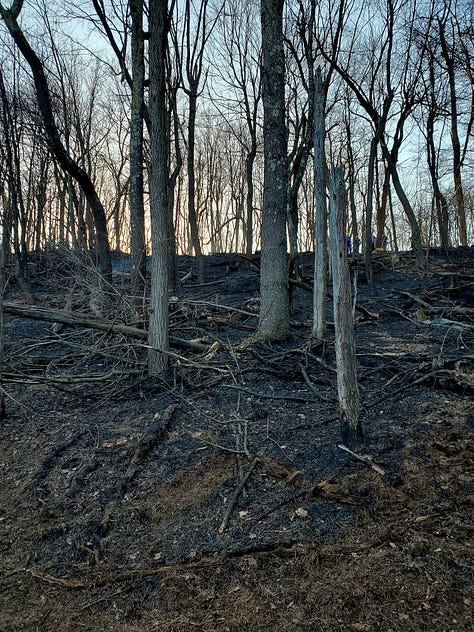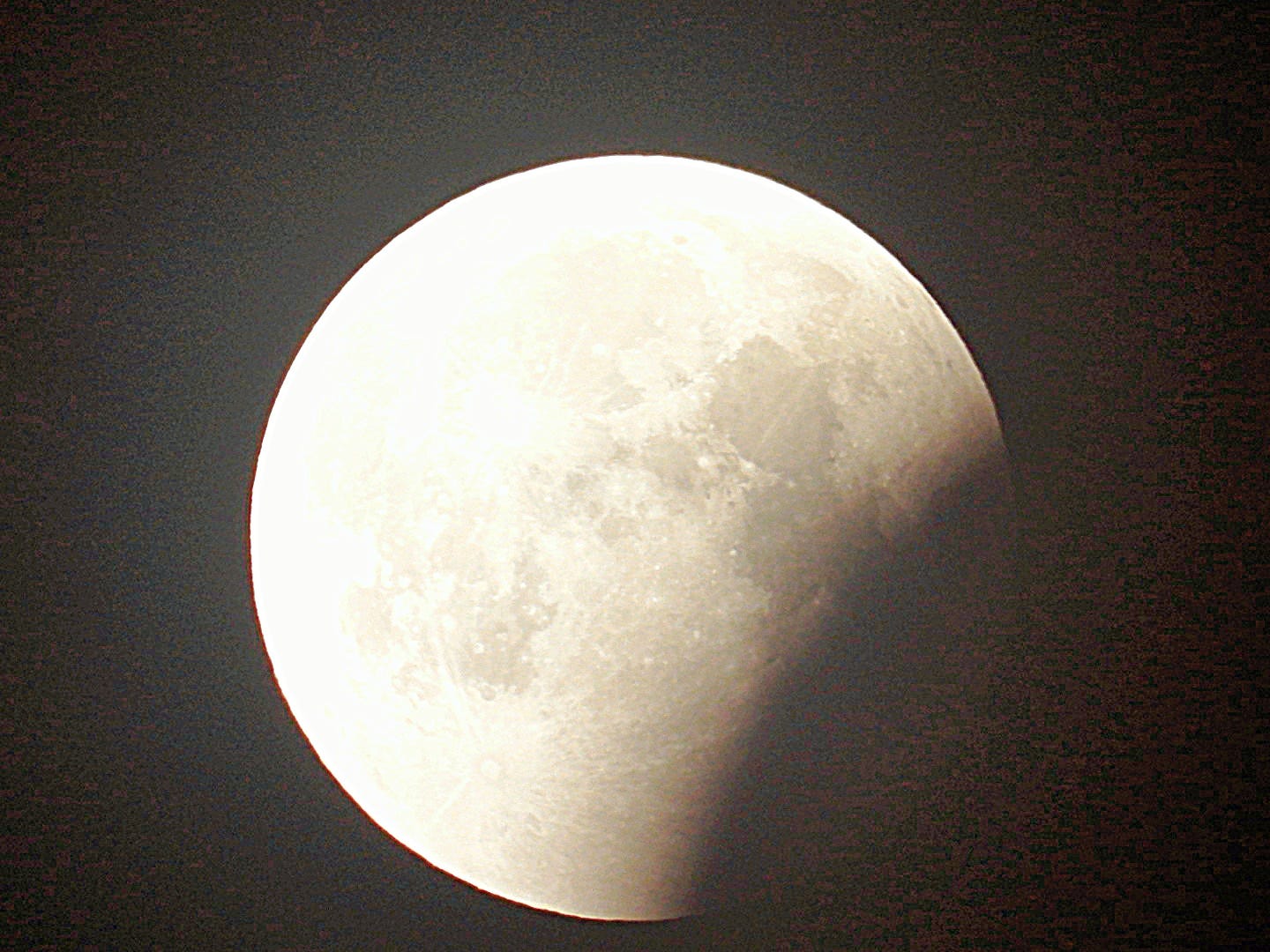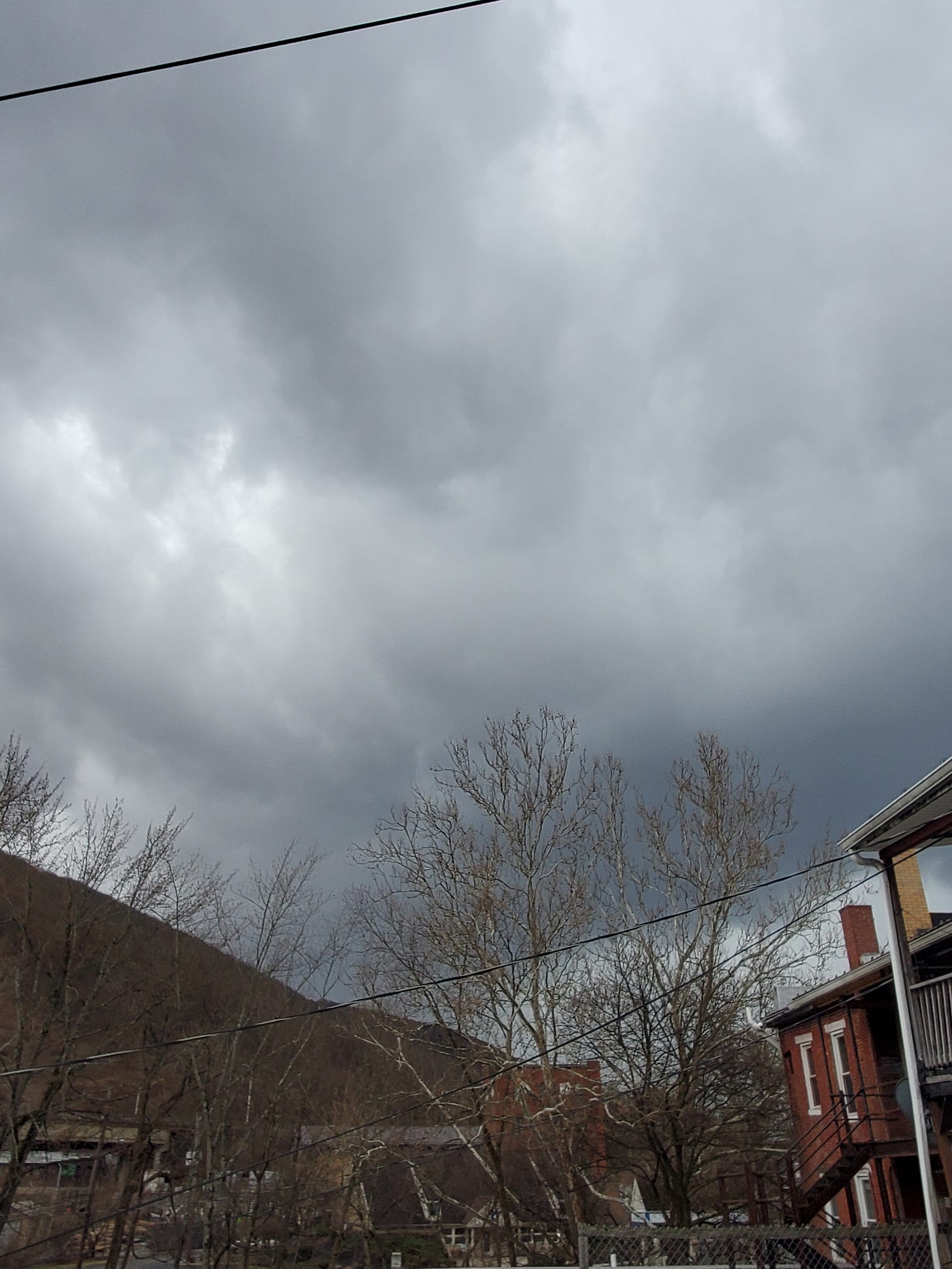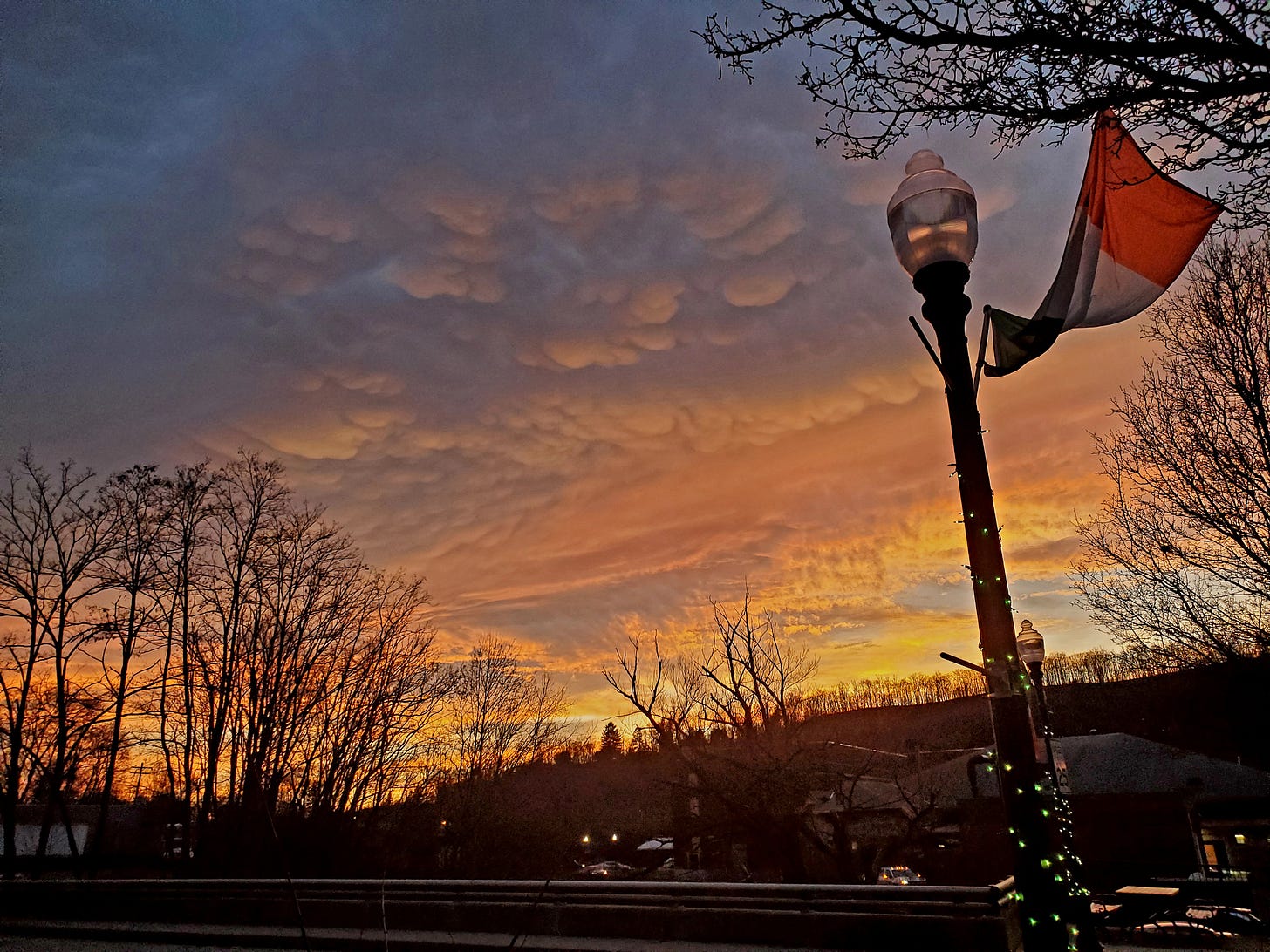Fire on the mountain
By the first week of March, a new old laptop and repaired NFC antenna made it to the garage, and just in time. Ice melt—what a concept!—was occurring in the north, and concentrated bursts of waterfowl were streaming that direction.
On the 7th, I had the privilege of watching a pair of small ducks circling around the east side of town in confusion, at dawn, looking for a spot to land. They splashed down at the confluence, and for a brief moment I caught a glimpse of Lesser Scaups before they swam upstream and out of sight. Hot on the heels of the Snow Goose from the other day, but even better—a new species altogether, number 233 overall for the Plummer’s Hollow eBird hotspot.
If you’re a regular visitor this space, you know that most waterfowl—save those who nest locally—aren’t easy for us holler folk to detect. Viable detection methods are splashdowns in our sliver of river, flyovers and fly-throughs (mostly at dawn, and usually very rapid), and nocturnal flight calls and wing whistles. Occasionally, fallouts yield rare species, such as the Ruddy Duck and White-winged Scoter seen during April 1979’s Day of the Ducks, and never since.
This year, the widespread icing of area lakes provided several winter rarities (for us) on unfrozen and placid stretches of river - a Horned Grebe, a pair of Hooded Mergansers, and the scaups, both species of which were firsts, with a wonderfully close view of a female Greater Scaup not long ago.
The distinctive wing whistle of a Common Goldeneye on New Year’s was the other all-time new species, picked up by Eric’s PUC microphone, which ran all winter. More of this species were detected via NFC in late March. Discounting a couple scoters, the only waterfowl regular in this part of the state and remaining to be found in Plummer’s Hollow are Canvasback and Redhead, which will have to wait until the fall or another icy winter. Like the scaups, there is no way to detect them at night.
Tundra Swans came early and often this year, with peak nights around the 12th, when dozens of flocks went over. The NFC microphone picked up not only whistles but also grunts, chuckles, and heavy wingbeats. Canada Geese peaked around the same time as swans, and then dwindled rapidly after the 15th, eventually ending in a couple pairs I see most mornings, flying west out of the Gap to feeding grounds somewhere in Bald Eagle or Logan valley.
I suffered a bit of anxiety from the late NFC rigging, afraid I might miss the stars of the night migration, Long-tailed Ducks. I needn’t have worried—they didn’t pick up speed until the end of March, by which point dozens of raucous, singing flocks went over most nights, starting sometimes as early as 10 PM and peaking around midnight. Unlike swans and geese they don’t seem to migrate during the daylight or even at dawn or dusk, so I’ve never actually seen any here, despite the hundreds or even thousands that transit the hotspot’s air space.
NFC recording also revealed smaller numbers of Gadwalls, American Wigeons, Northern Pintails, and Green-winged Teal, all species with distinctive flight calls/quacks/whistles mixed in with wing beats and wing whistles.
Among the various “duck sp.” I spotted from the balcony—waterfowl in rapid flight are some of the most challenging birds to ID—was a tight flock of 13 Northern Shovelers. This unexpected high count of a species I’ve never seen on the water here flew relatively low and fast out of the Gap, going right overhead and disappearing westward, to the local reservoirs or onward. Like a lot of dawn waterfowl sightings, it occurred after a night of unsettled weather.
Our three common, locally breeding ducks dwindled rapidly in numbers over the month, and the winter flock of Mallards, with its piebald companion, left the area or broke into nesting pairs. By the beginning of April, only a handful of Mallards are easily visible in the morning skies. The same applies to Common Merganser, which are down to a pair that fly west every morning and east in the evenings, and occasionally pop up at the confluence. Wood Ducks are even scarcer.
All in all, from the vantage point of early April, this has been the best year for waterfowl yet—again, by Hollow standards—with additional species (hopefully) still to come. Among the many unidentified NFCs, two stand out. Have a listen, and let me know what you think. The first is from the early AM of the 18th, and may be a swan:
The second is from the 30th around 4 AM, and the closest match I have found is Pied-billed Grebe, but it’s not definitive:



Run Boys Run
At 3:19 PM on Thursday the 13th, Eric texted about a brush fire reported from Sapsucker Ridge. Within minutes, friends began to contact me, as news of smoke from up top, easily visible from Tyrone and its suburbs, spread rapidly (like, um, wildfire). All indications were a blaze at the Far Field, so Dave headed that way on foot, Eric, who was in Altoona, got on the line with fire crews, and I high-tailed it from town to the Hollow to open the gate for any emergency responders who might show up.
And boy, did they show up. A motley assortment of tricked-out fire ATVs, logo-ed pick-ups packed with volunteers (even kids), and a few private vehicles mostly slowed down at the houses so I could direct them the right way up First Field, which turned into a muddy morass after about an hour. When Eric got back, he drove the dozer to the steep part and managed to haul up a fair number of trucks (not the big ones—they can’t access the Hollow, so remained parked along the main highway) toward the spruce grove. Dave provided updates from Far Field as several dozen firefighters battled a 3-acre blaze of unknown cause in the woods at the very highest part of the property. It got inches away from a neighbor’s property before coming under control. A fire forester from the state (DCNR) supervised the whole event, which wound down over the course of the evening.
A lunar eclipse then ate up much of the night.
The next morning, tongues of smoke from the smoldering embers, which were embedded, according to Eric and Dave, deep in the old trunks, drift lazily north along the crest of Sapsucker Ridge, tickling the brow of Bald Eagle Mountain and then turning into a haze that moved on up Bald Eagle Valley for several miles. We never did learn what the DCNR deemed to have been the cause of what they labelled the Chestnut Fire, but all was well that ended well—we got a first-ever patch of charred forest floor and undergrowth to observe succession in, and we have a better idea about logistics if and when this happens again.
100 or bust
Thanks to the diversity of waterfowl, this was the first year that the century mark seemed attainable by the end of March. The last couple of years, the species total has languished in the low nineties, despite much warmer weather and greater field effort.
One by one, the expected new species for 2025 made the list, despite the worst winter for raptors since I’ve been keeping careful notes. Though I didn’t have time to be out scanning the daytime skies during every favorable wind, the effort I did put in netted only two Golden Eagles—one on the 7th and the other at the end of the month—and a single Red-shouldered Hawk (10th), while the year’s first Northern Harrier didn’t appear until a vigorous north wind on the 30th. Meanwhile, a Peregrine Falcon finally showed up for an overnight (20/21) just as I was preparing to leave for a week to Mexico City. It had the plumage of a second-year amateur, and seemingly had no luck grabbing any of the vastly reduced numbers of Rock Pigeons over town.
American Woodcocks were late and scarce, with the first migrant flyover recorded the night of the 7th. As the unseasonably cold weather persisted over most of the month, courtship in the field didn’t happen until March was nearly over. Meanwhile, a single Wilson’s Snipe went over the antenna on the 15th.
Fish Crows returned to town in grand fashion, as they do, on the 6th. They always appear suddenly, at mid-morning, vocalizing raucously. On the 10th, three perched on the bank roof across the street from my home office, and engaged in an apparent courtship ritual. They wiped their bills continuously and flew back and forth, changing position, while making quite strange vocalizations the entire time. By the end of the month, they were quiet again, so I’m not sure if any nested, or if they moved on upriver.
The very emblem of early spring, Eastern Phoebe, took so long to return this year that I began to wonder if HPAI (avian influenza) had done it in. Given the number present in early April, I think instead that their return lagged simply because of the colder weather; they had to go a lot further south this winter, and as a result, took longer to get back. In any case, while the very first one was calling in Redstart Swamp by the 15th, it was another week until phoebes were ensconced in all their regular haunts.
I mostly missed the big spring sparrow concentrations on the mountain that can bring state-high numbers of Fox, White-throated, and Song sparrows as well as Eastern Towhees, but the NFC record helped keep up with the northward transit of other species. First to appear at night was the Chipping Sparrow, on the 11th, even though it didn’t start to populate local habitats for another week or two. Field Sparrows, completely absent from the mountain this winter, were audible from the top of Laurel Ridge on the 12th, as they had already arrived on territory in Sinking Valley. It took them several more days to make it to our fields.
Rarer, non-nesting sparrows also flew over: White-crowned on the 15th, Savannah on the 30th, and most unusual, a Grasshopper Sparrow on the same night. The latter usually comes much later, around when Vespers and the occasionally Henslow’s can be heard. The previous early date was April 15, in 2023.
The NFC recorder operated while I was in Mexico, but it didn’t pick up much, as the nights remained frigid. The last three days of the month, however, were jam packed, as temperatures climbed and winds shifted to the south. On the 29th, a small flock of Horned Larks twittered over not long after 7 PM, and not long before nightfall, the first Virginia Rail, doing its full flight call several times, fluttered by. Since 2021, when we first started keeping NFC records, this was the earliest rail by two days.
On the 30th, an American Pipit went over at night, while during a morning hike, I heard a distant Eastern Meadowlark from the edge of the hotspot, and later, the first Pine Warbler chipped high in a Hollow tree. The day before, Eric’s PUC had picked up 2025’s first warbler, a Louisiana Waterthrush hollering down by the stream. The record tied for earliest ever in over 50 years.
Finally, 100 species seemed in sight. On the afternoon of the 30th, strong southerly winds brought the first Tree Swallow whizzing along Sapsucker Ridge and over town. Then, on what felt like the perfect morning for cormorants, a V of 10 Double-cresteds emerged confusedly out of the Gap, flying hesitatingly, as they do, first west and then northwest, as if unsure exactly where or if to land. With that, the 2025 list reached 99 species. 100 remained elusive, unless any of those cryptic NFCs can be ID’ed as something new. If not, #100 belongs to an American Barn Owl that flew over on the night of the 1st.
Day of the Peckerwoods
After a week of demonic dolls, towering aqueducts, and massive pyramids, I was eager to catch up, and was able to spare several hours for a hotspot circuit. At 6 AM, a woodcock exploded from around the garage, and Great Horned Owls were courting along the tangled slopes below the powerline. Later, Barred Owls made unspeakable noises from three different places.
At 630 AM, the valley was a sea of birdsong even while the mountaintop was still silent. Thirty species sounded off by 7. After I left the powerline and continued the circuit, I began to notice that the rarer woodpeckers seemed more abundant than the the common ones. It was peak flicker—a county-record 16 Northern Flickers were about, usually in pairs, curious as always and sometimes on the ground. It could be there were even more on the 31st, as from my balcony at the edge of the hotspot in town I watched several emerge from the ridgetop and fly overhead, something never seen at other times of the year.
I heard seven Red-headed Woodpeckers, also a county record, without even reaching one of their new, preferred spots. I’ll be very surprised if we don’t end up with a first-ever breeding pair or two. And then the Pileateds—nine this time, a new county high, suggesting at least four breeding territories.
Yellow-bellied Sapsuckers were the most astonishing. They have a whole ridge named after them, but are never very common there in migration. Over on Dogwood Knoll and nearby, they were all about in pairs and trios, vocalizing constantly. Their favorite places are woods with hickories, it seems. A county-record 13 were around.
Another record, also reflecting a migratory peak, was of Brown Creepers, with 17. They are either becoming more abundant or I’m just much better at detecting their calls. Whatever the reason, this is the first year they have appeared in small flocks (3s, 4s, 5s), usually but not always in the company of Golden-crowned Kinglets, also peaking around this time, and ever-present Black-capped Chickadees.
The five hours I spent out on the 30th brought the first 50+ species total (51) of the year. This can be difficult to attain in March; last year it took until April 6th, though in 2023 I reached the watershed in March 26. It never ceases to impress me that it takes around three months to reach an all-morning count number that can be reached by 6:30 AM in May, during which 100 species can be reached in a single morning.
Balcony Basics
After several years of this, I’ve figured out that the most productive winter birding for unusual species is along the river, while early spring sightings are most likely from the balcony, at dawn as well as dusk. Late spring, summer, and early fall are best out in the woods, and late fall is most productive back on the balcony again.
Nevertheless, the best part of the balcony is keeping tabs on numbers and habits of regular species, and getting to know some of them as individuals, like the male European Starling who posts up every morning and evening on a sycamore, separate from his gregarious colleague, and goes through a full range of vocalizations. I believe his nest is over on the avenue side somewhere. Most of the other locals are also already nesting, though Common Grackles and American Robins, in very high numbers this year, are split between aggressively territorial townies and still-unbroken flocks coming and going from valley to valley and dawn and dusk.
While grackles and robins are notably up this year, as are American Goldfinches and Chipping Sparrows, so far, Rock Pigeon numbers have plummeted from the hundreds to around 40. While this could be a bad case of the flu, it might also be due to destruction of all the old brick paper mill buildings last year, or even direct extermination. Meanwhile, House Finches were never really high last fall, and only a few pairs are around right now. As for House Sparrows, they’re doing just fine, thank you! Finally, and best of all, Common Ravens are nesting at the edge of towns, so I’ve got more opportunities than ever before to make prayers to them.







